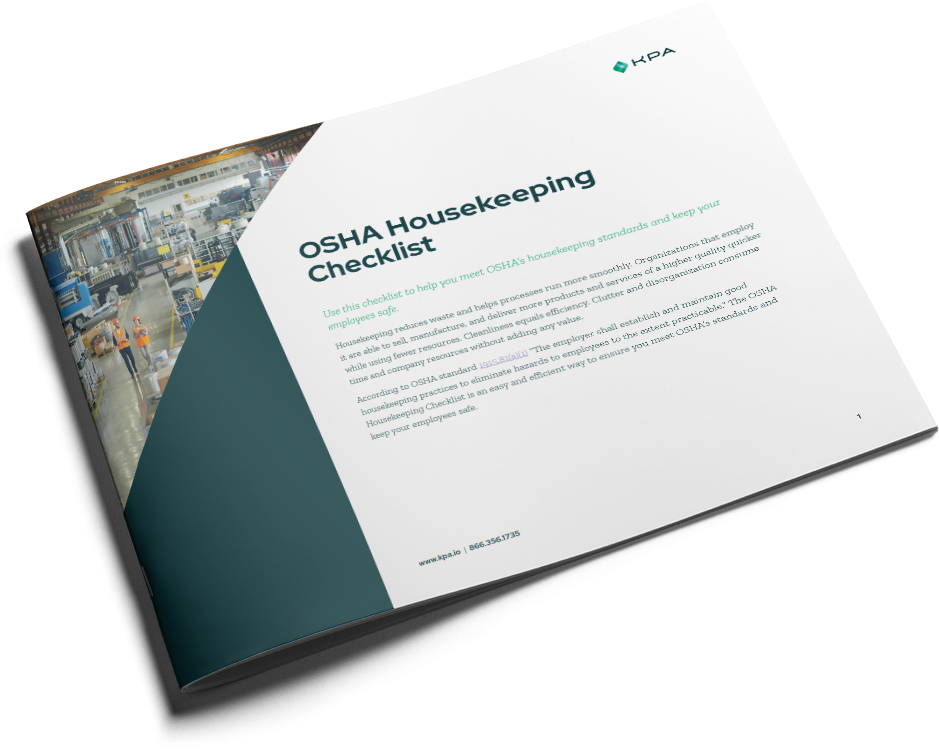Clean up nicely and you’ll clean up nicely—the way you might clean up at a poker table.
Yes, organizational housekeeping isn’t just good for your people. It isn’t just good for the soul. It’s good for your bottom line.
Effective workplace cleaning efforts are typically structured
under the 5S System:
- Sort
- Set in Order
- Shine
- Standardize
- Sustain
In a previous installment in this series, we uncovered a 6th “S”: Safety. But there may in fact be a 7th S, or more accurately an S-like symbol: $, the dollar sign.

OSHA Housekeeping Checklist
Download KPA's OSHA Housekeeping Checklist to help you identify areas in need of some good housekeeping.
How does housekeeping mean money?
Let u$ count the way$
At a Glance: General Rules for Good Housekeeping
If you’ve read through our entire “spring cleaning” series so far, you’ve undergone an intensive course in organizational housekeeping. You’ve learned why cleaning matters, how the 5S System works, ways to motivate people to clean up, and the link between housekeeping and safety.
At this point, you know what a difference a comprehensive approach to cleaning can make. But let’s say you don’t have the time or resources to implement it at your company at a high level. Perhaps you run a small business and lack the capacity for a full 5S approach.
You can still save your company money, reduce injuries, and create a better environment overall for yourself and your employees by starting with a few simple steps:
1. Clean up after yourself. Make housekeeping a priority. Positively recognize the employees that keep their work areas clean and encourage those that don’t.
2. Institute a routine clean schedule. Just like at your home or anywhere else, cleaning is an ongoing job. You need to create a schedule to make sure housekeeping becomes a routine. You may want to include safety equipment inspections in that schedule—have someone check your fire extinguishers, eyewash stations, tanks, and so forth.
3. Store flammables, sharps, and other hazards properly. Anything that can cause illness or injury needs to be organized and put away first. If nothing else, clean up your hazards.
4. Keep tools and materials organized. Find a place for everything. Many organizations use tape on the floor to designate where things go. This makes it easier for a worker to find what they may be looking for and keep areas clear.
Ready to get started on your cleaning program and make some extra $? Need help taking care of the mess?
KPA can help. Combining on-site auditing and consulting with innovative safety software and award-winning training, our solution empowers organizations to minimize losses, ensure compliance, and boost the bottom line. See what we can do for you—contact us for a demo.
Related Content
Explore more comprehensive articles, specialized guides, and insightful interviews selected, offering fresh insights, data-driven analysis, and expert perspectives.
